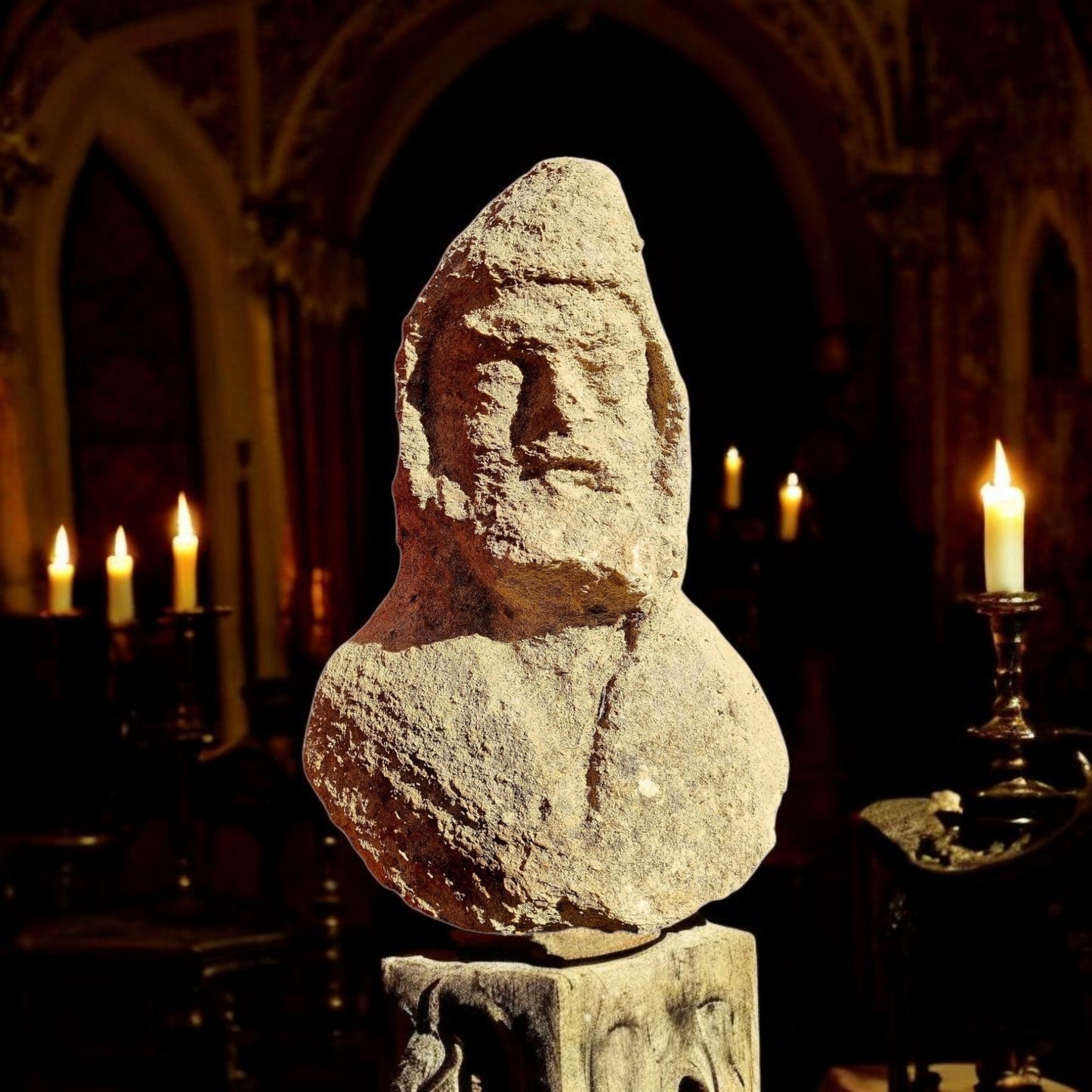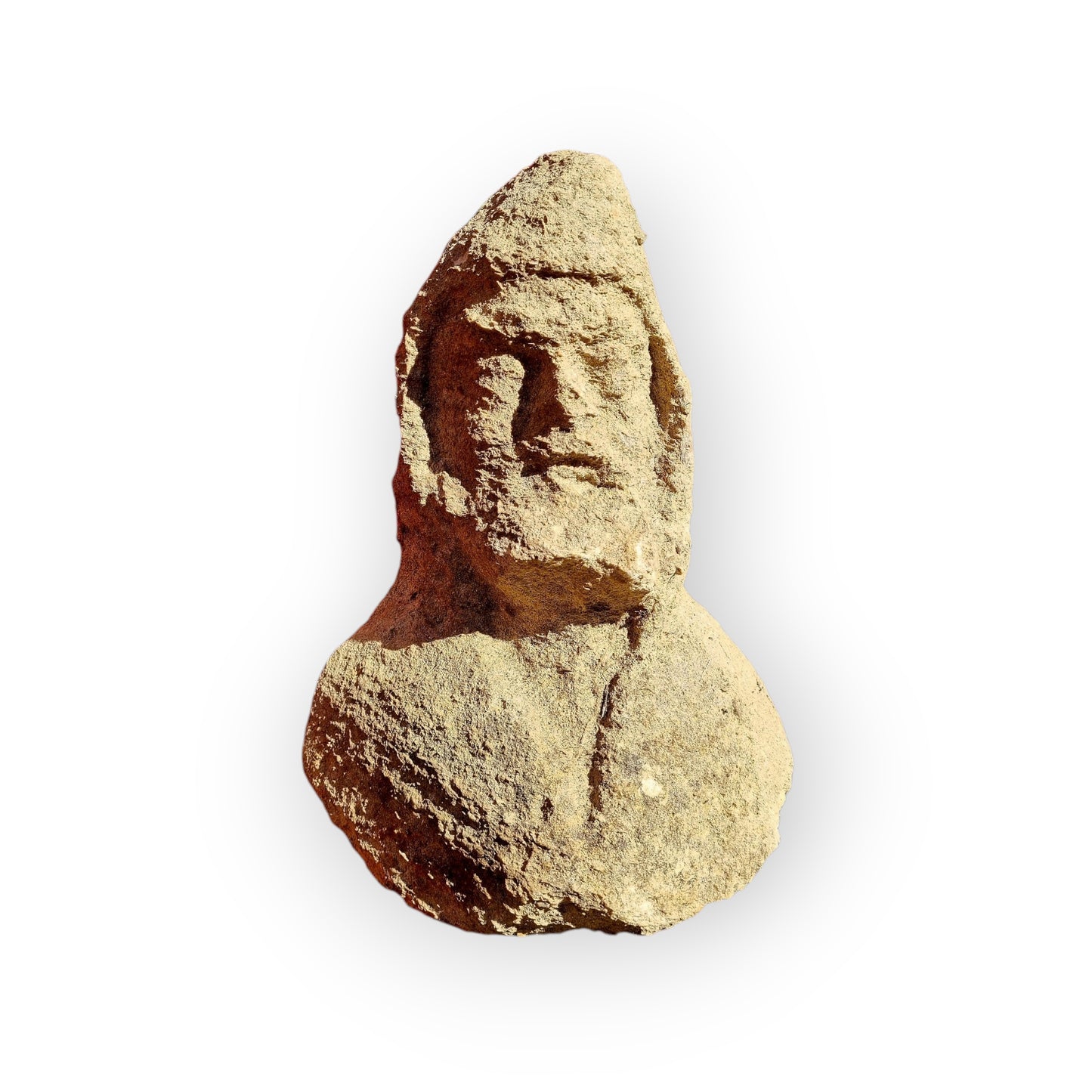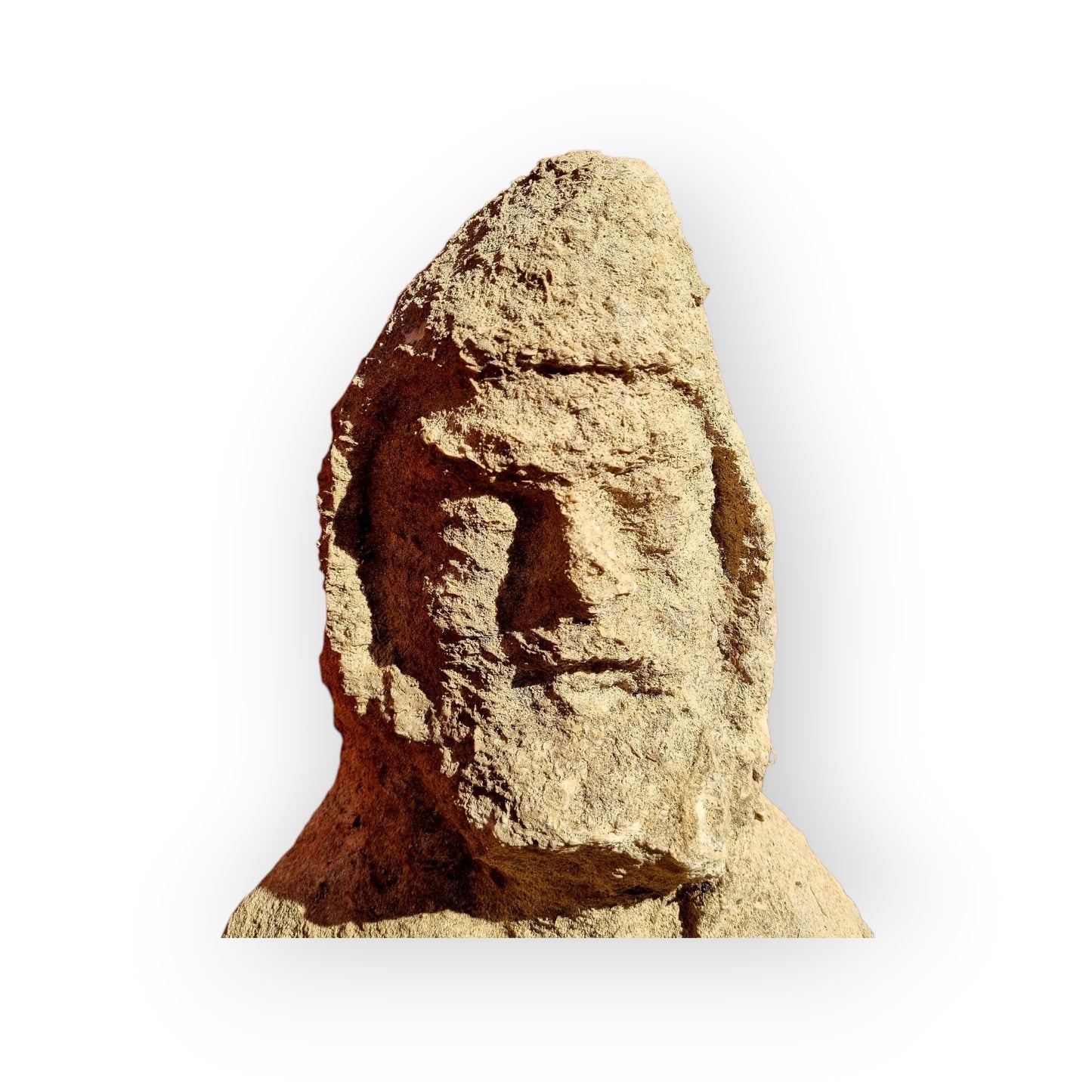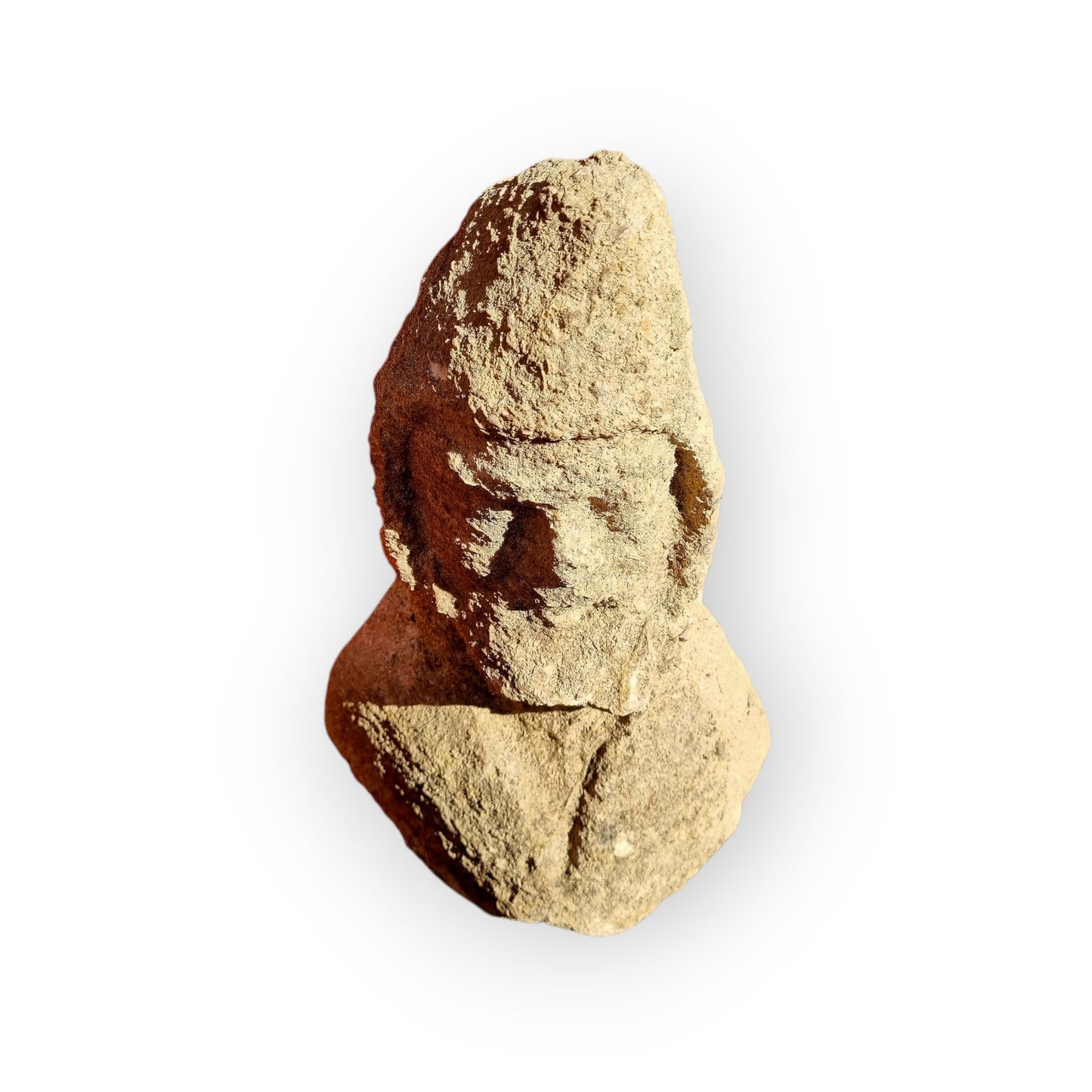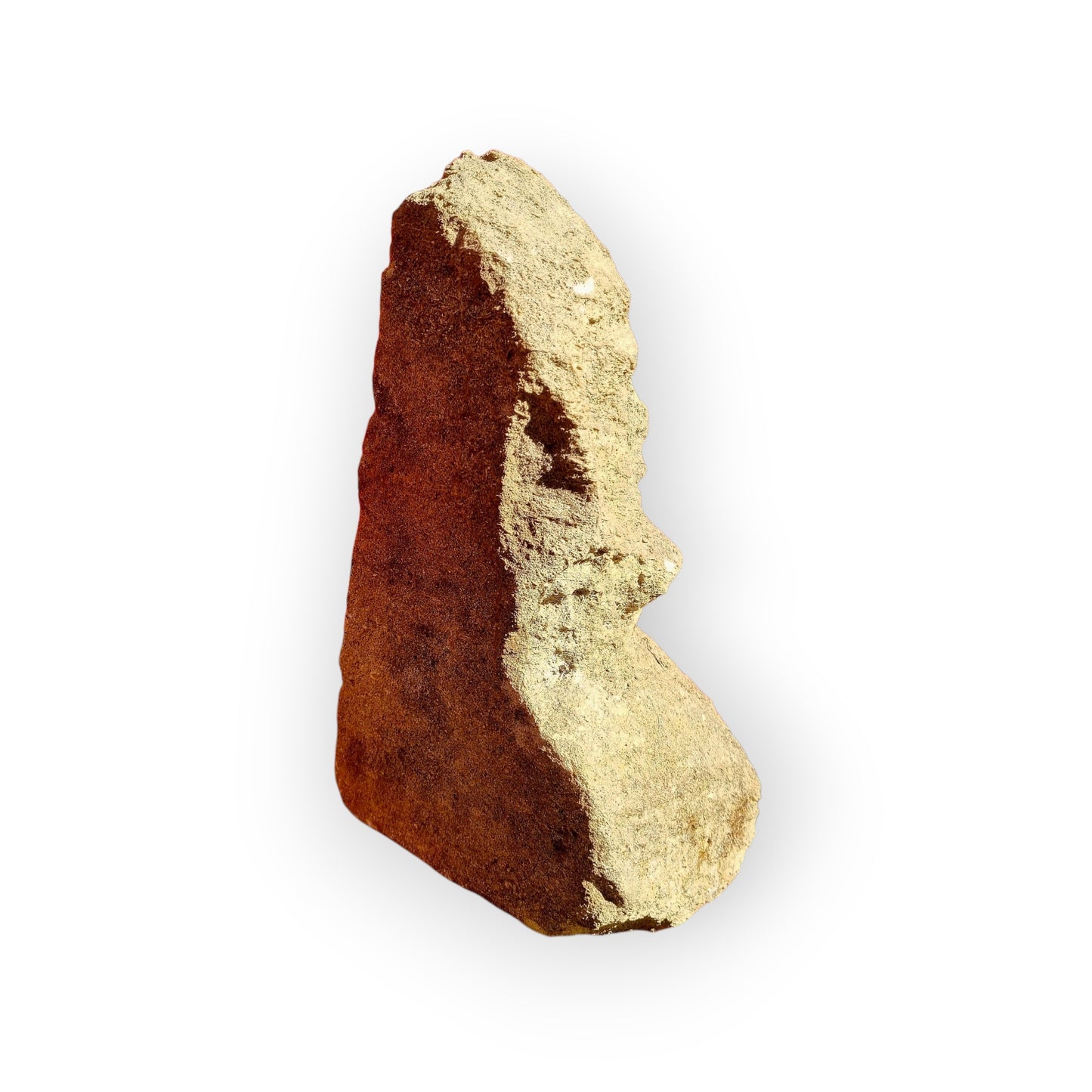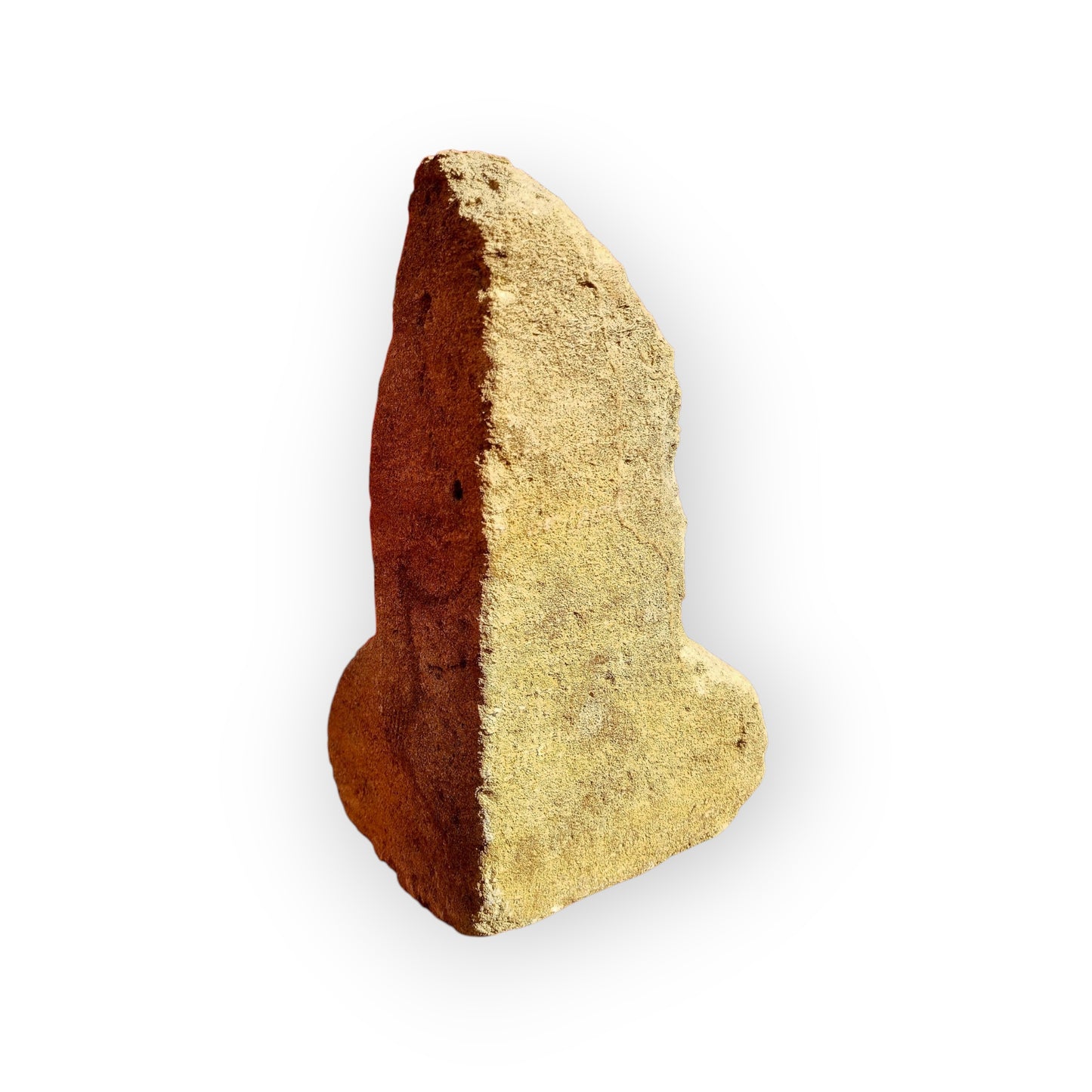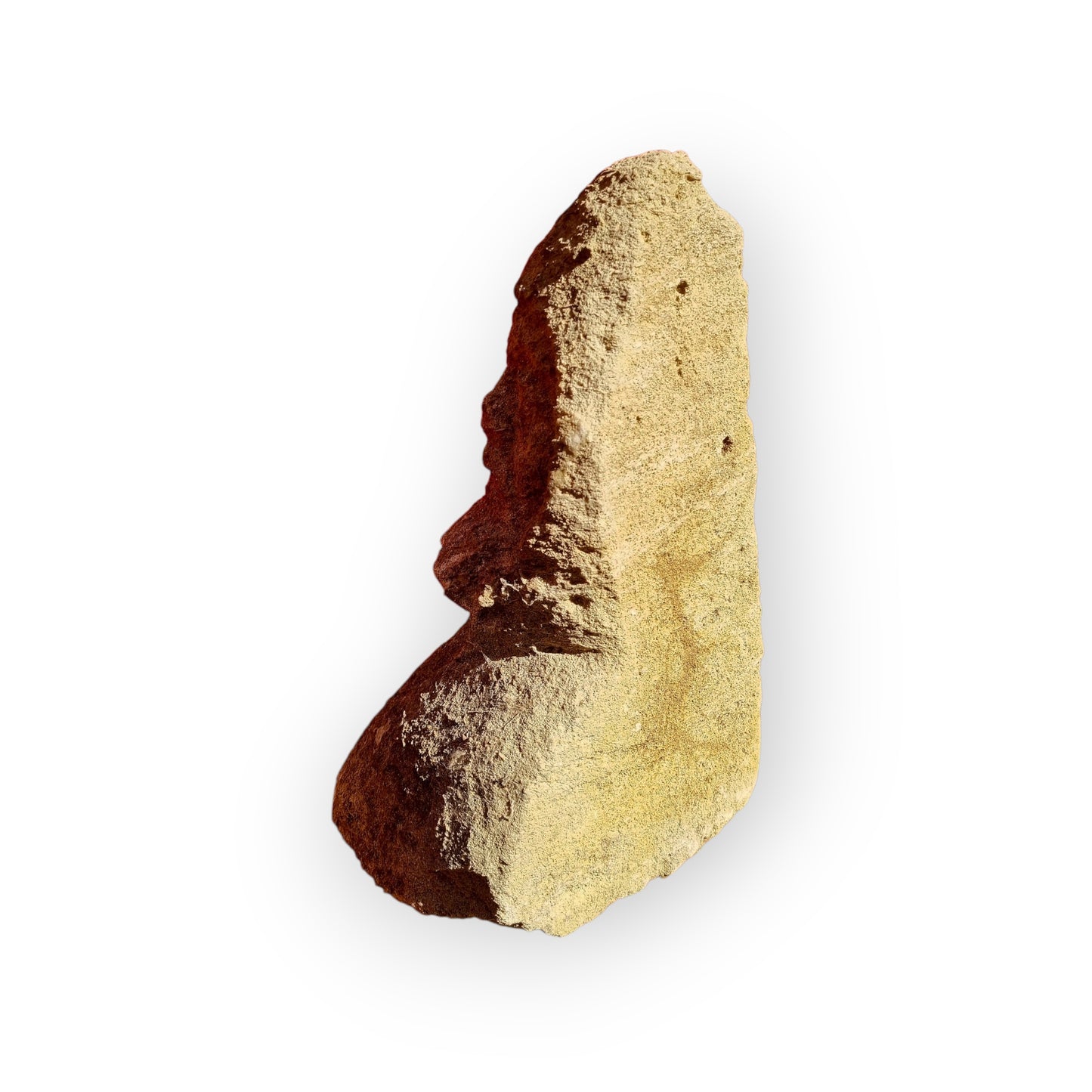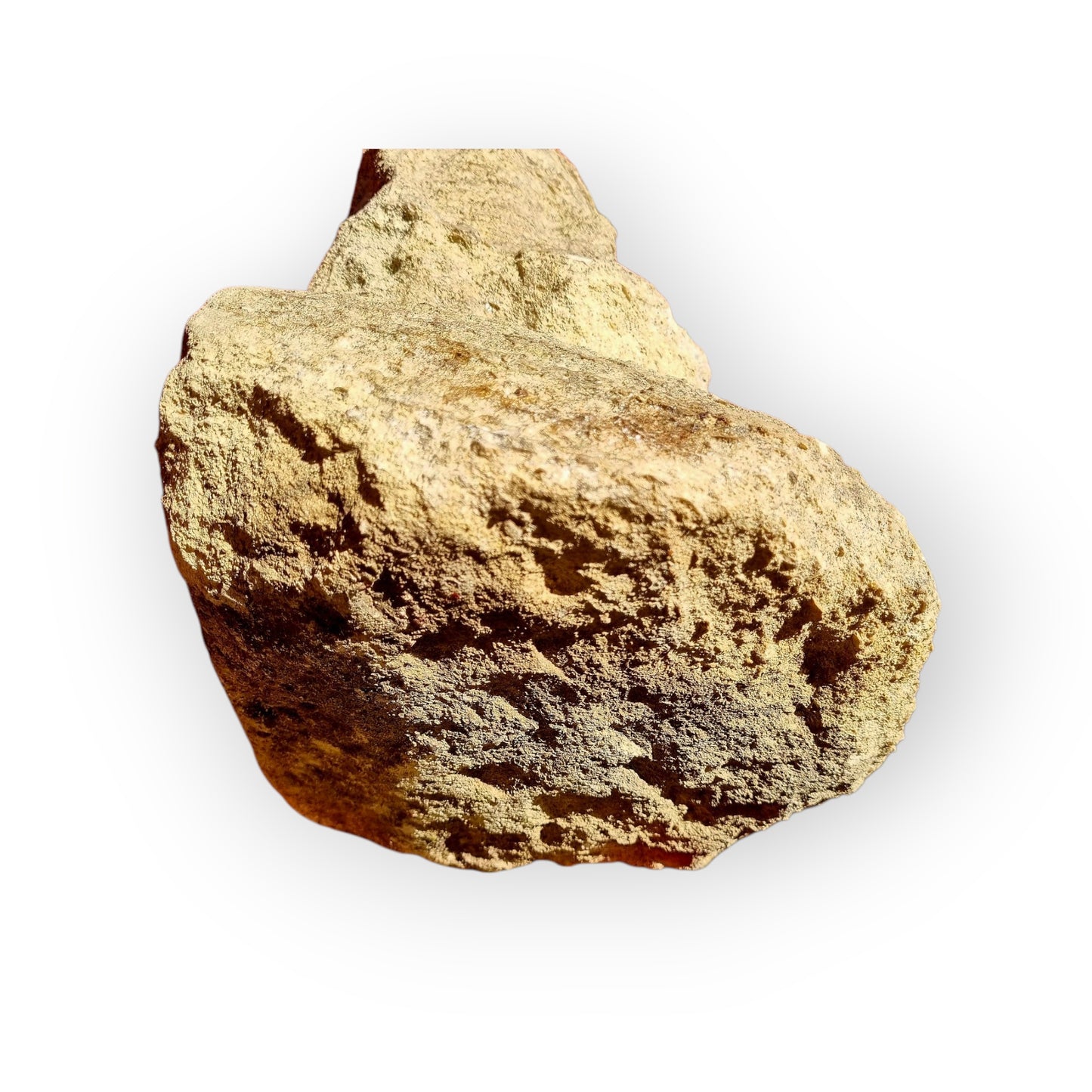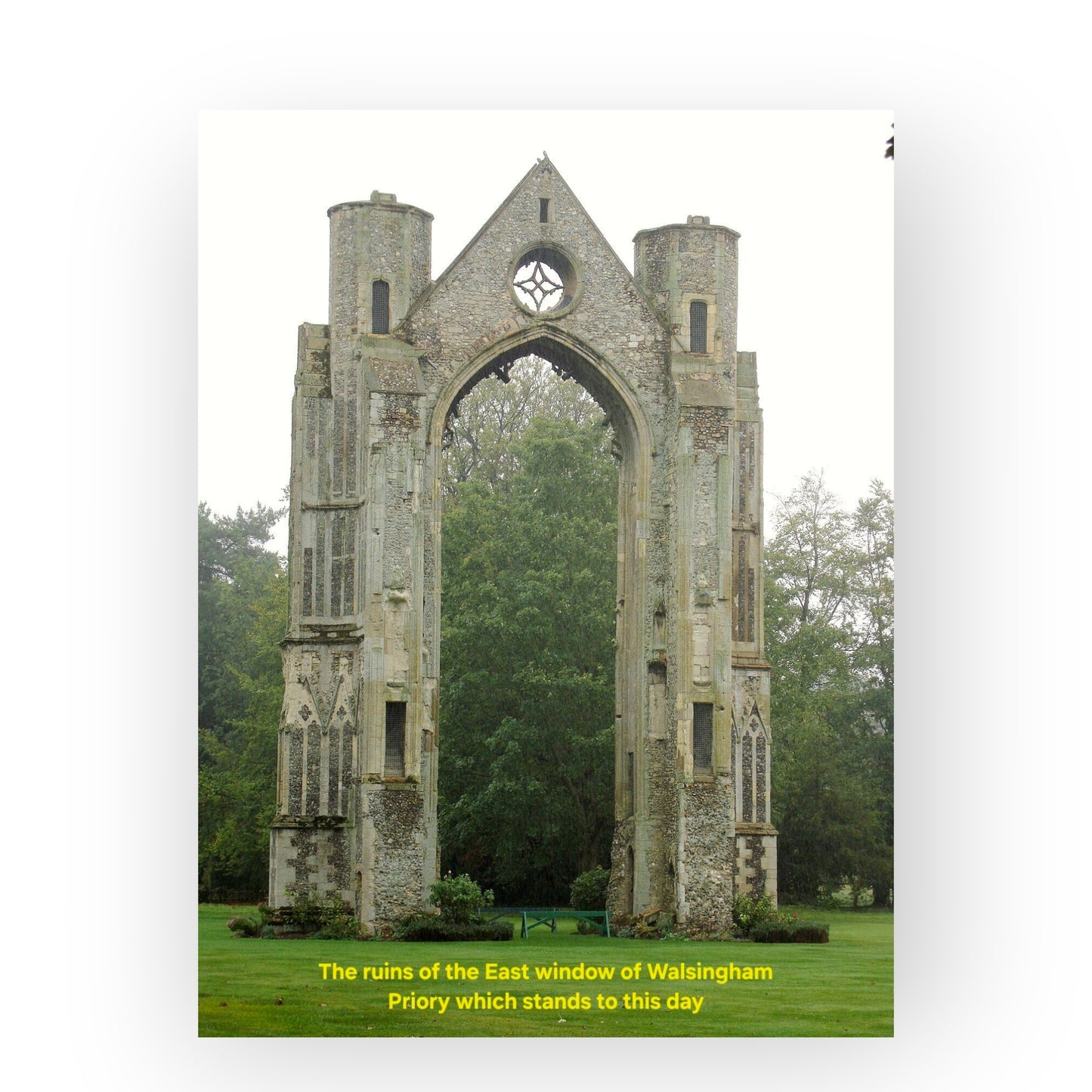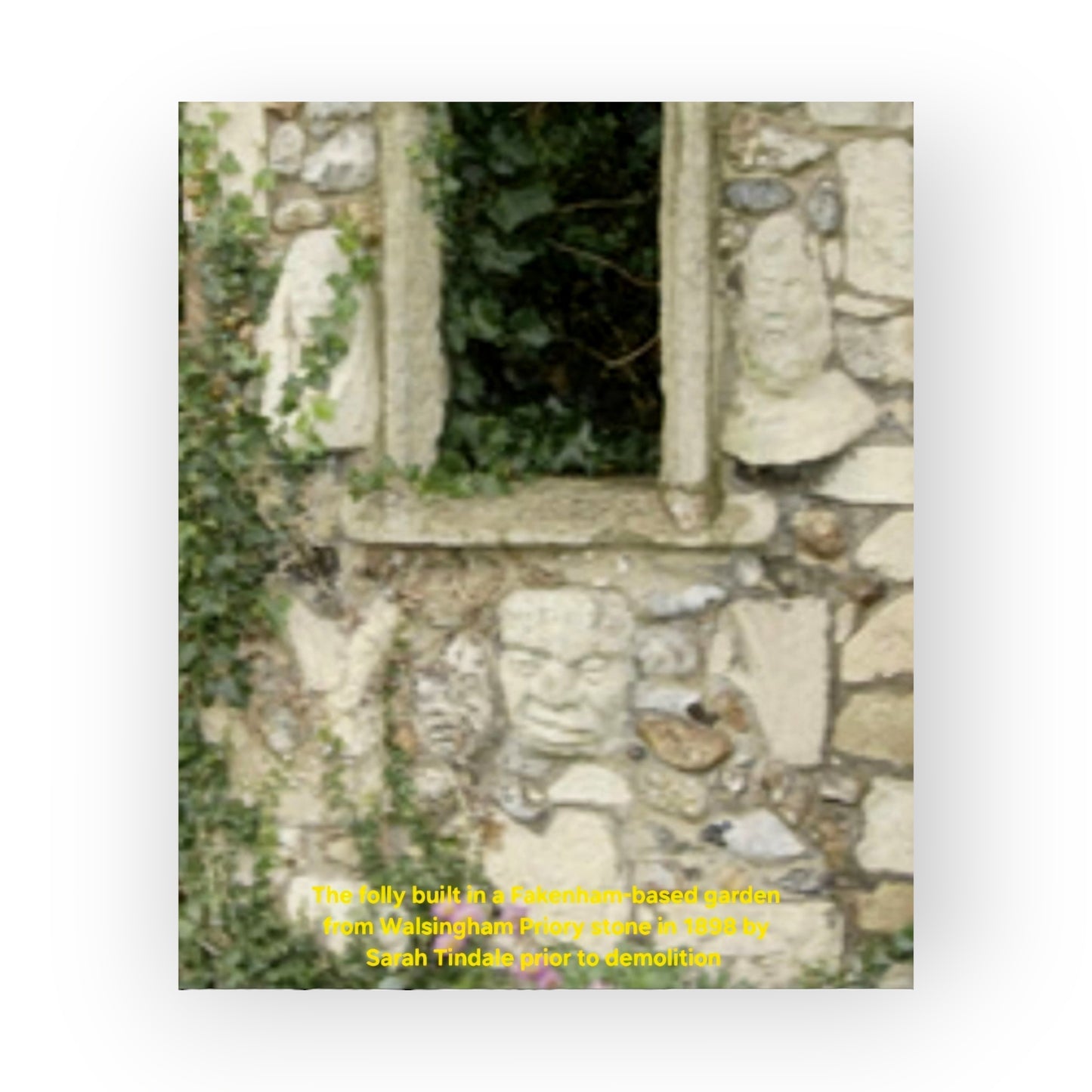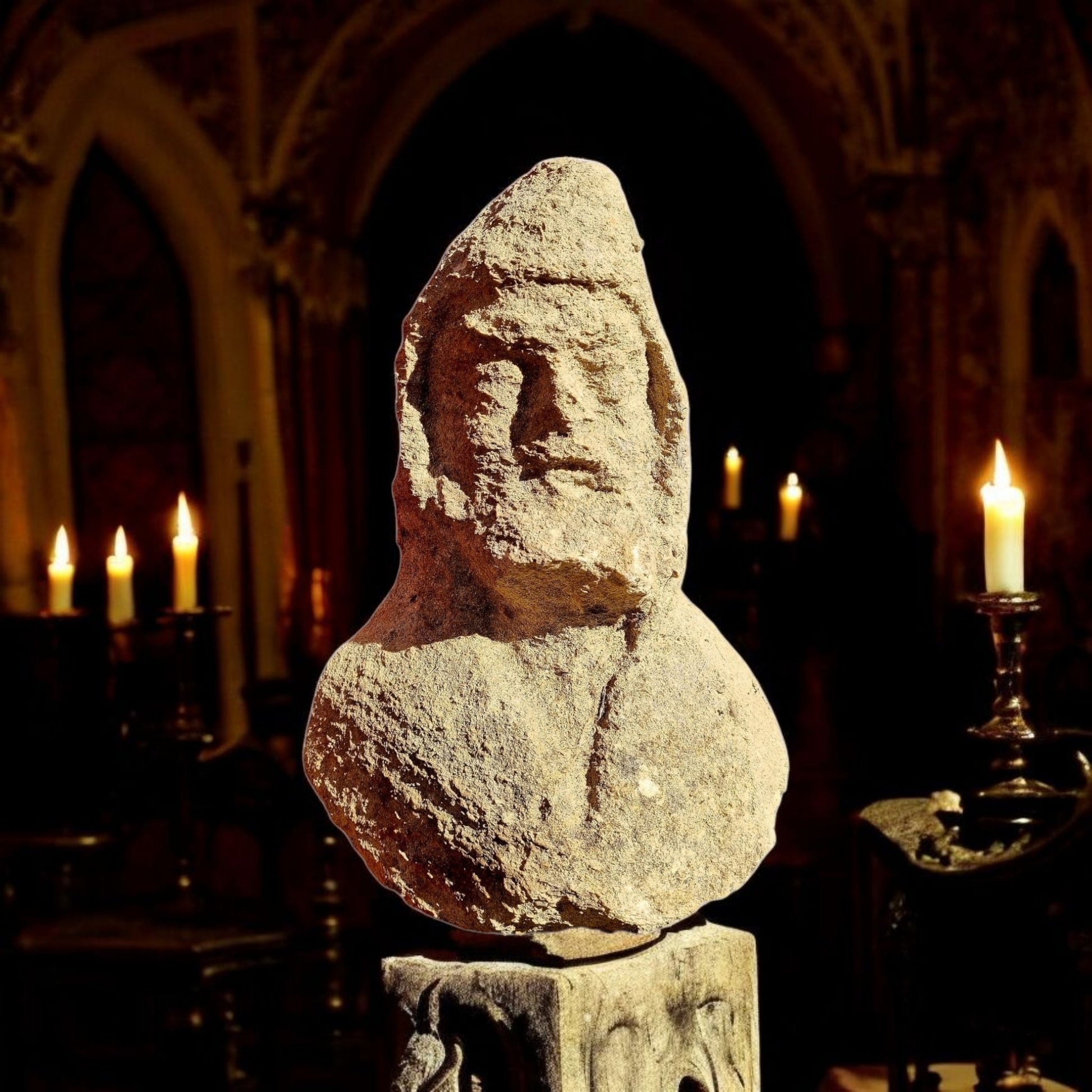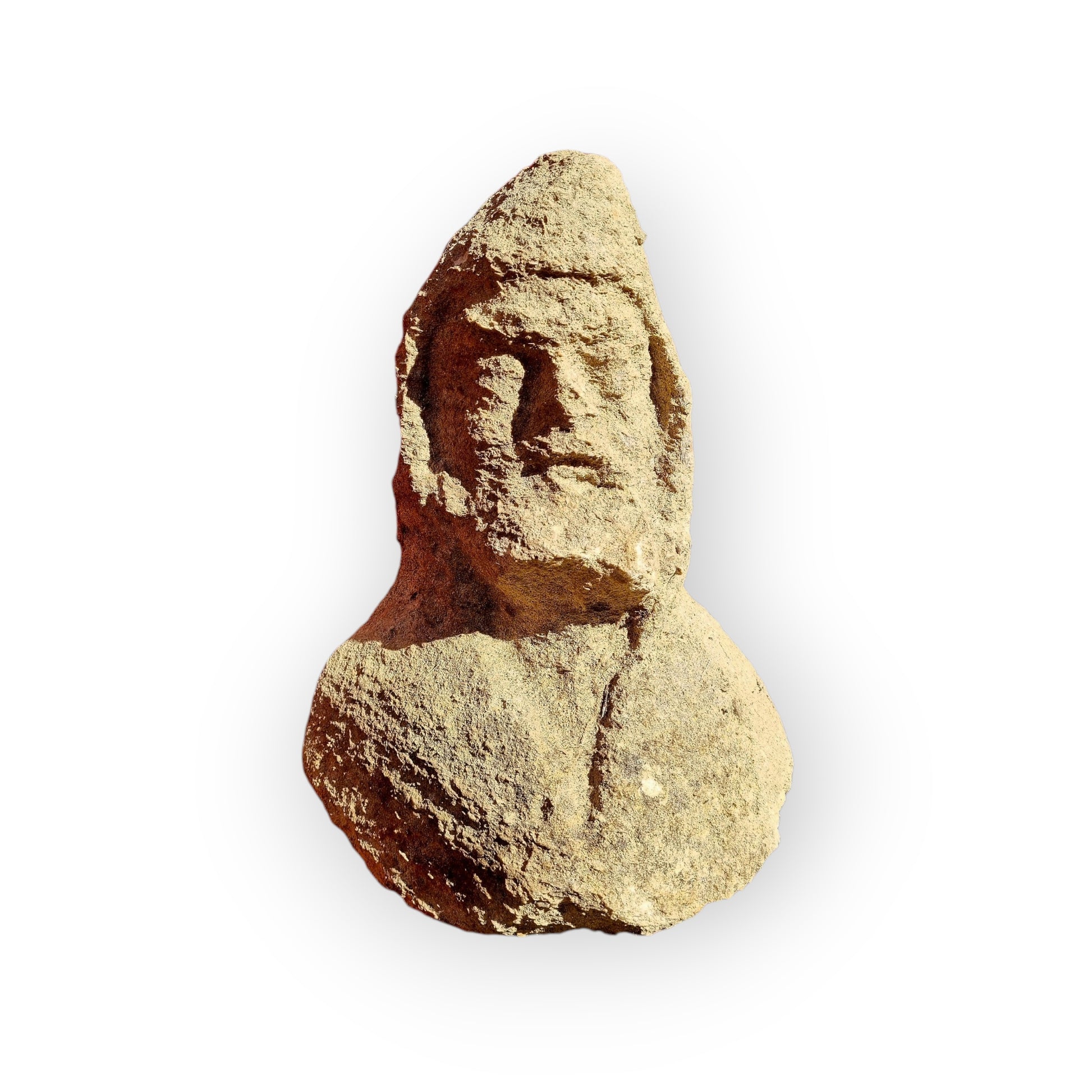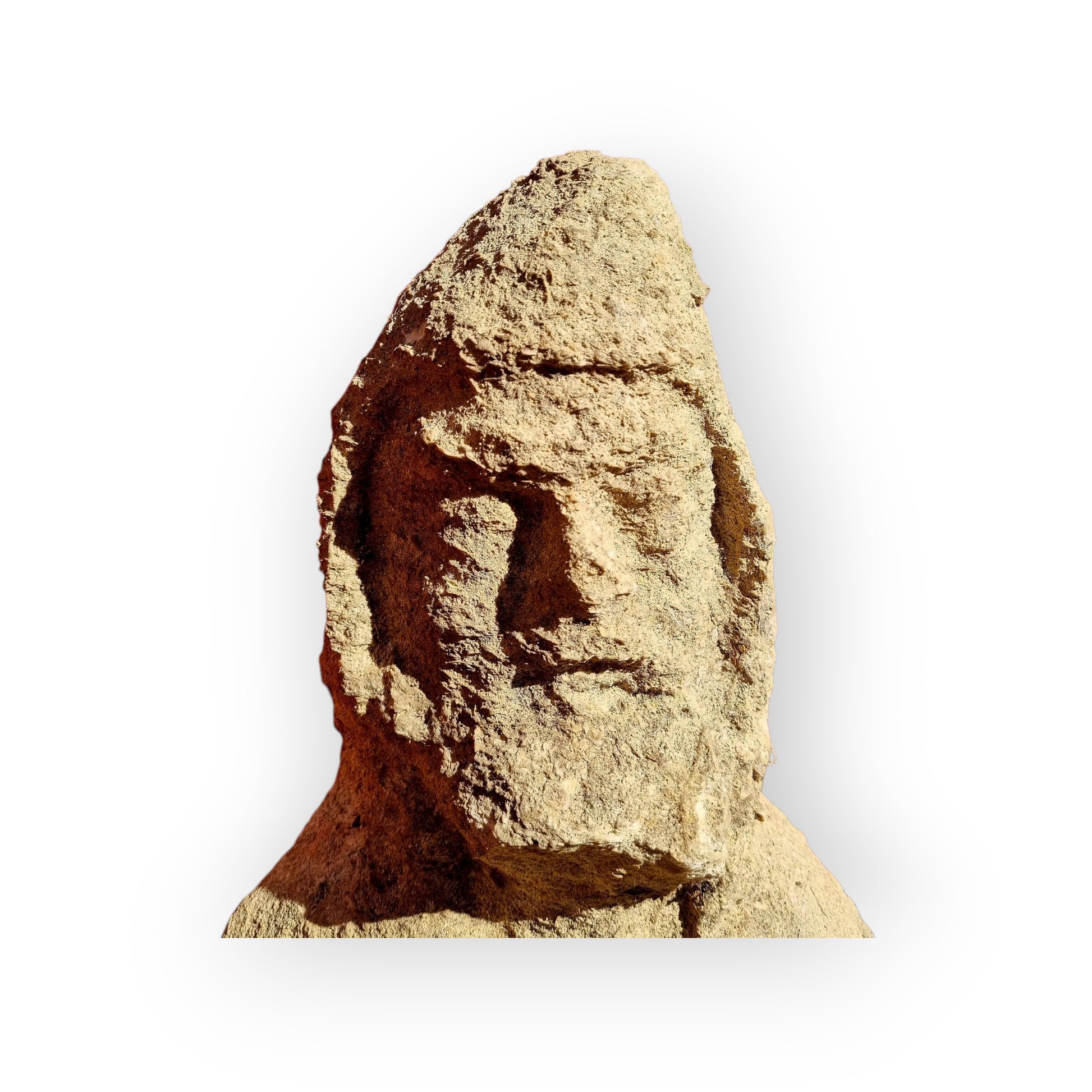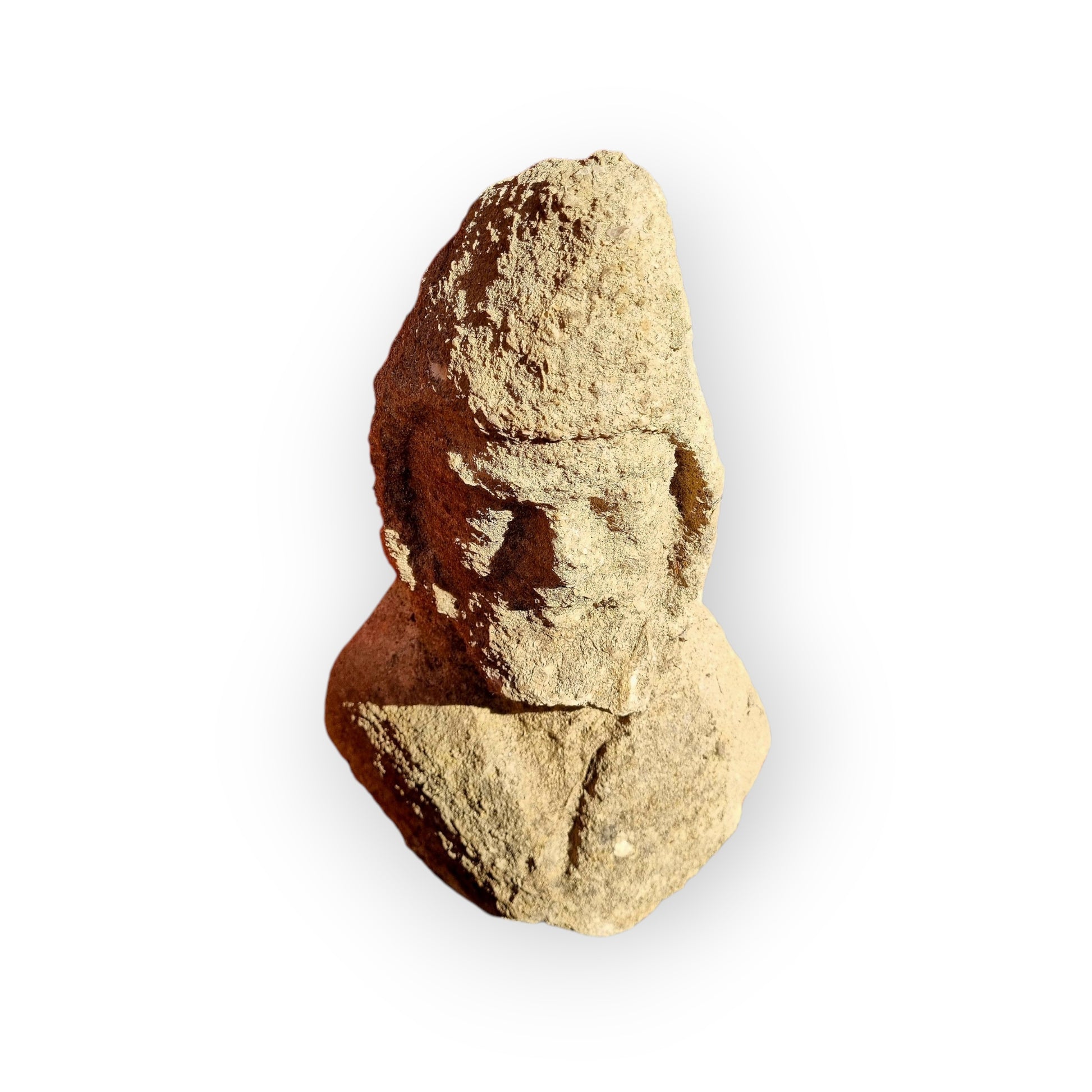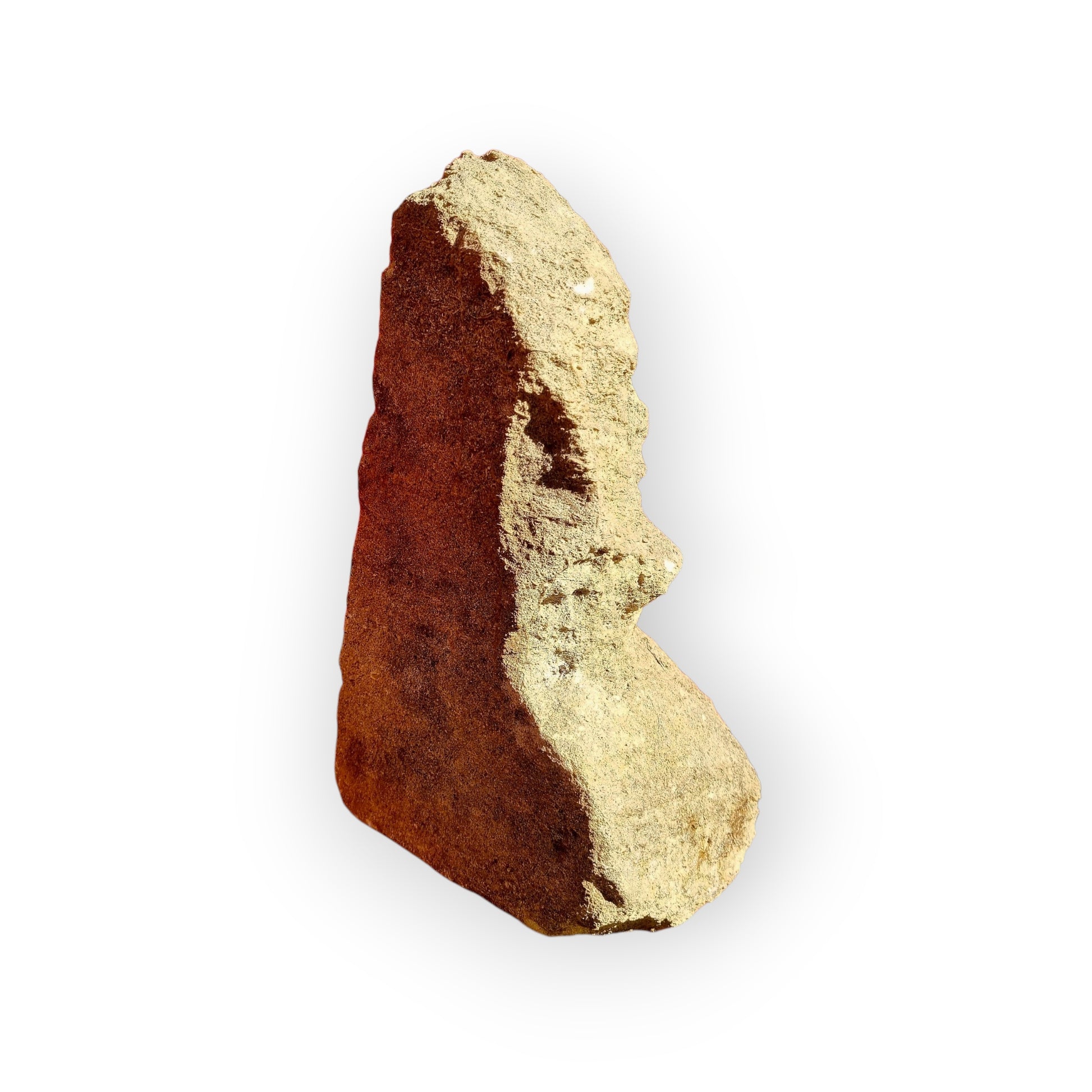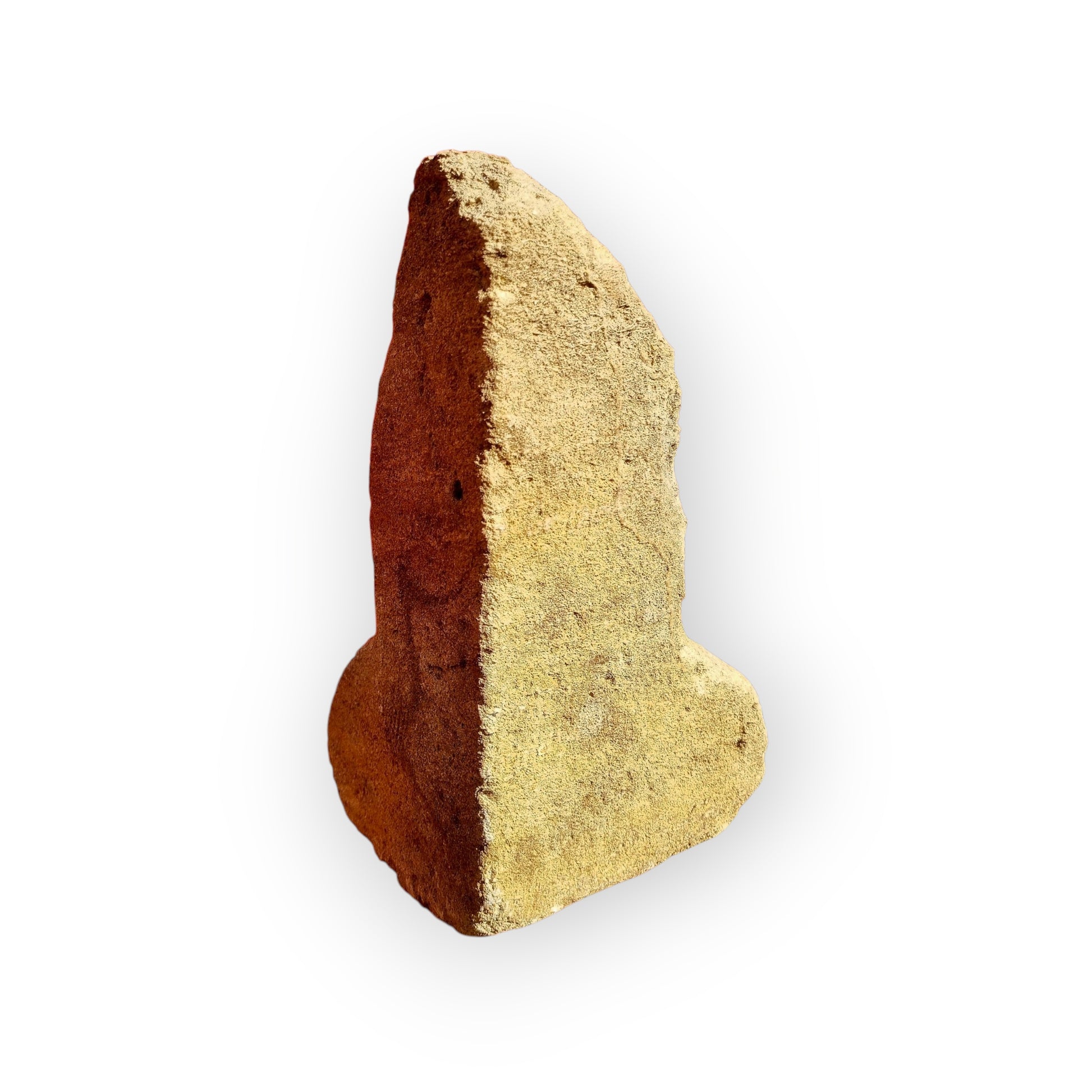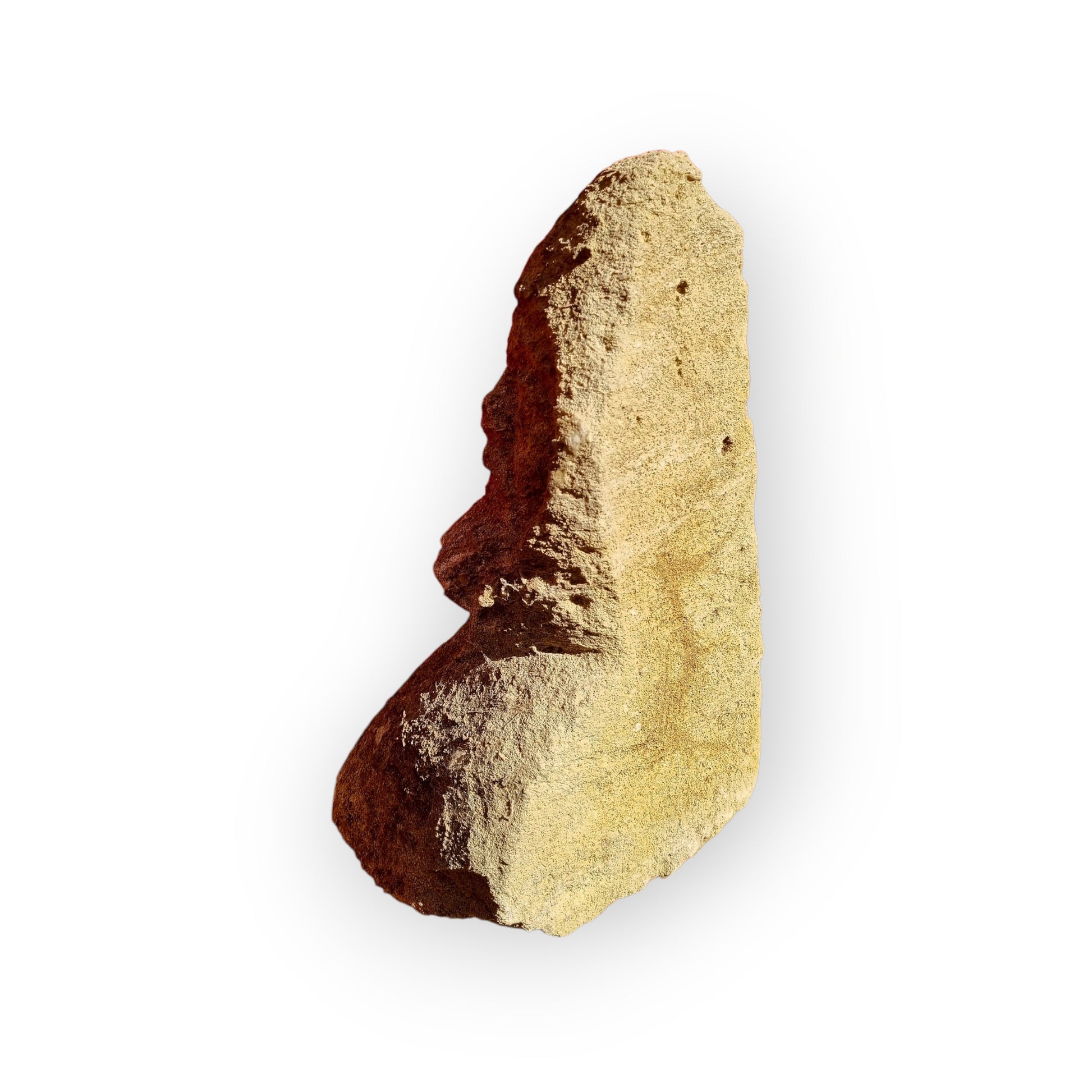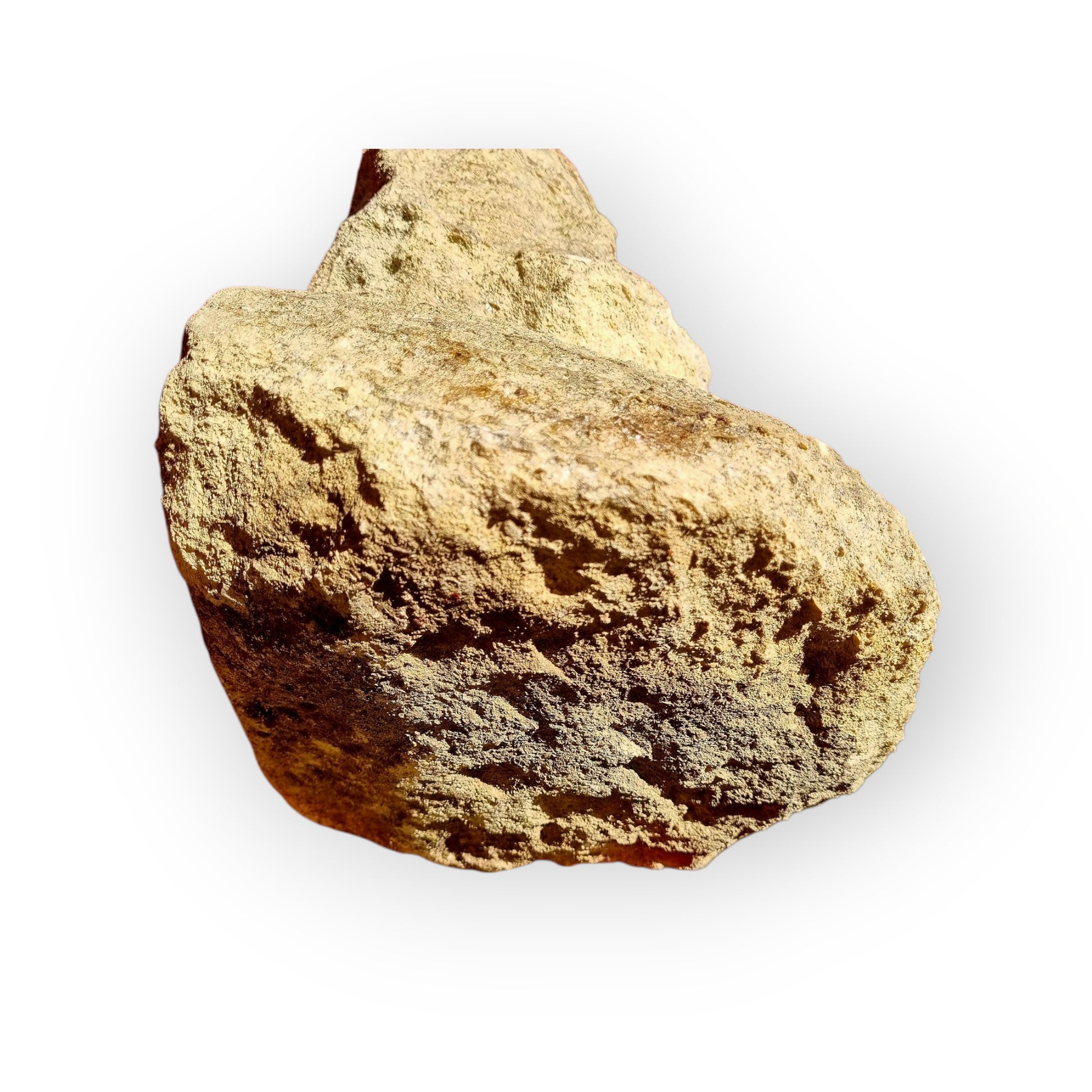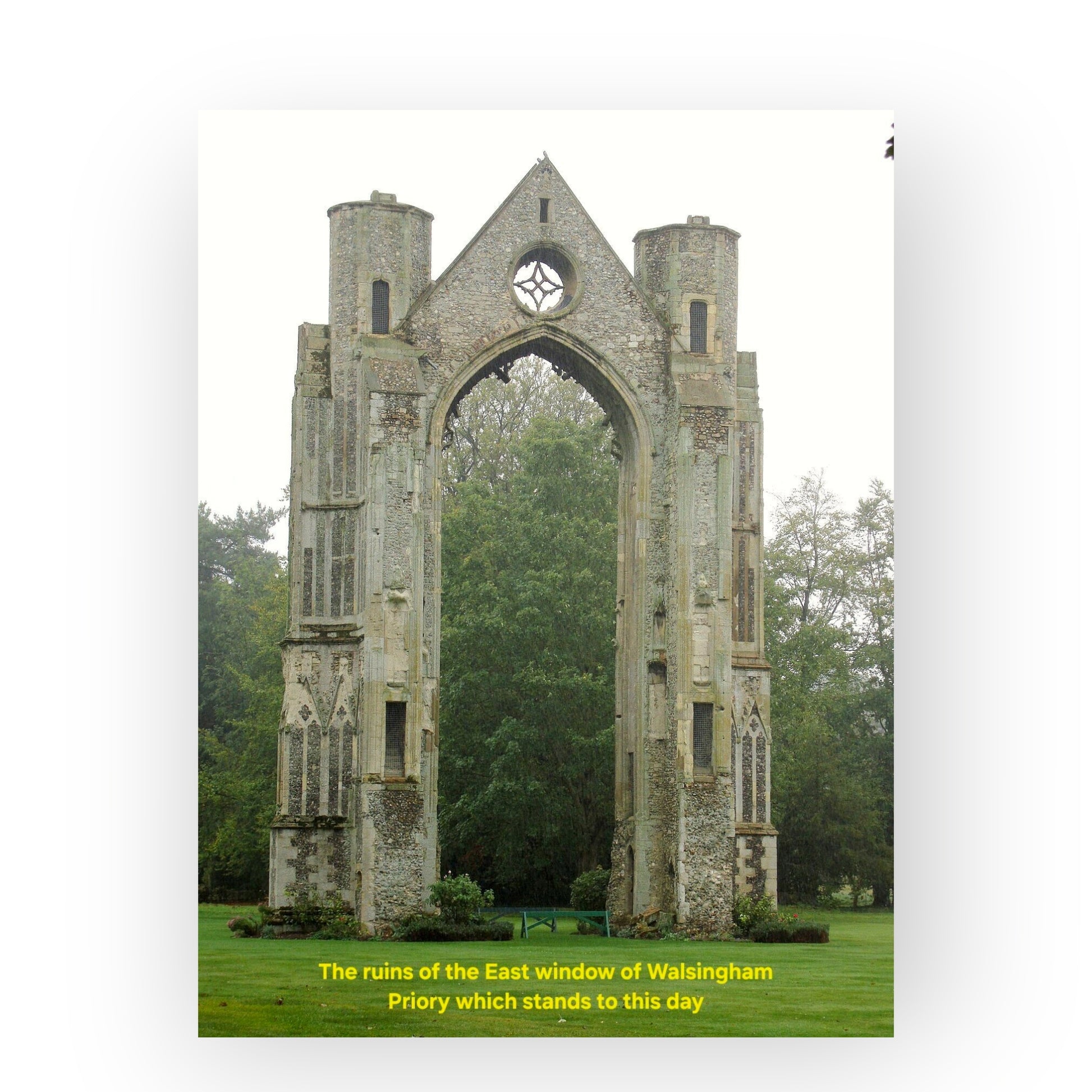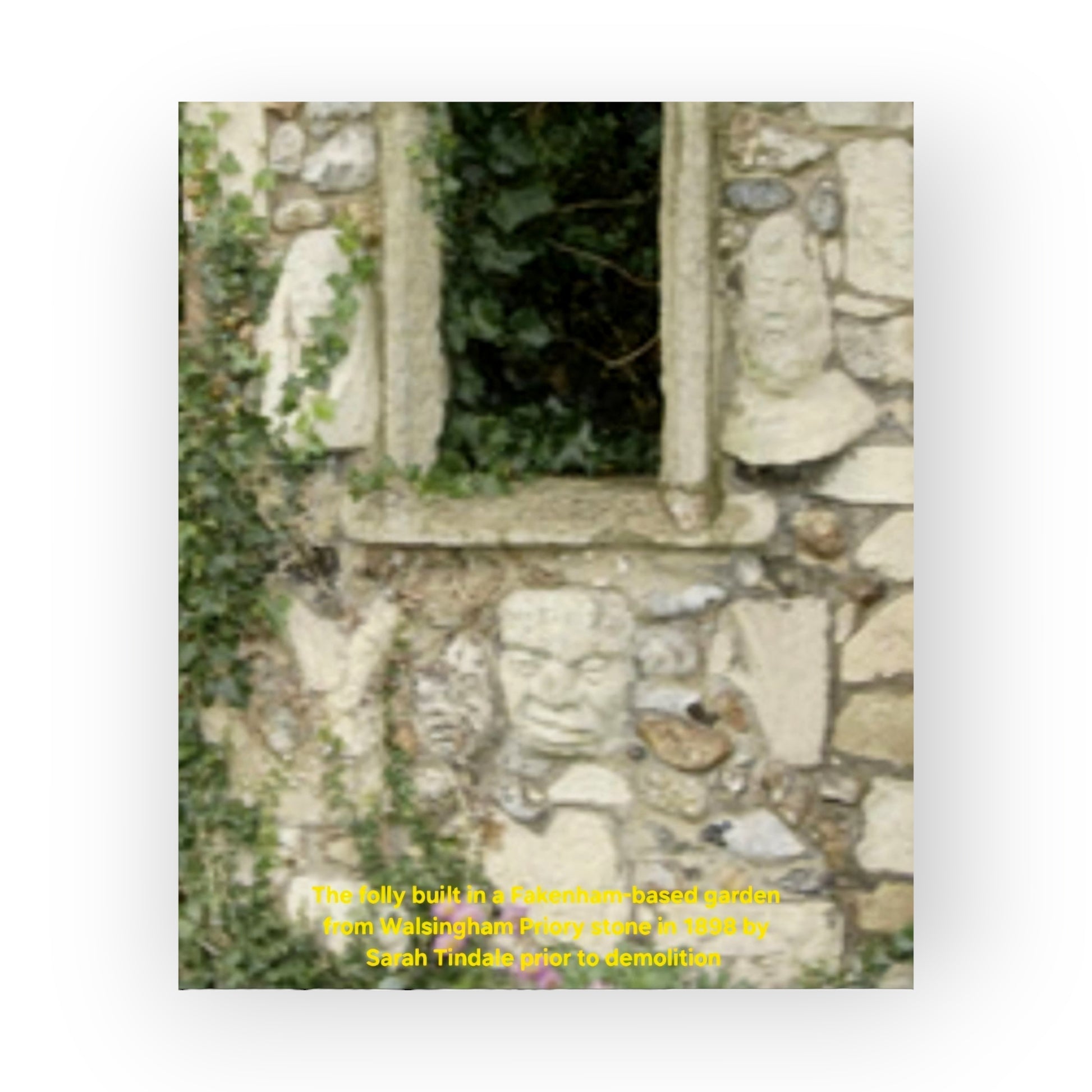Holt Antiques at Walsingham Mill
Originating From Walsingham Priory, Norfolk, England - A Medieval Period English Antique Carved Stone Sculpture / Bust Of A Monk Wearing A Cowl (Monk's Hood) -
Originating From Walsingham Priory, Norfolk, England - A Medieval Period English Antique Carved Stone Sculpture / Bust Of A Monk Wearing A Cowl (Monk's Hood) -


Couldn't load pickup availability
A medieval antique carved stone bust of a monk depicted wearing a cowl.
English origin. Dating from between the 12th-century and 15th-century.
This delightful stone bust once formed part of the decorative adornments to Walsingham Priory.
About Walsingham Priory - (Now referred to as Walsingham Abbey) - Literally a stones throw away from our shop on the opposite side of The High Street:
The village of Walsingham is located just four miles in land from the glorius North Norfolk coastline and North Sea.
In the 11th century, during the reign of Edward the Confessor, Lady Richeldis, a widow of the Lord of the Manor of Walsingham Parva, had a vision of the Virgin Mary, who led her in spirit to Nazareth and showed her the house where the Angel Gabriel had appeared to Mary.
Richeldis was instructed to build a replica of the Holy House in Walsingham, which became known as the "Holy House" and a focus of pilgrimage.
The Augustinian Canons built a Priory enclosing the Holy House in the 12th-century.
This shrine of Our Lady of Walsingham became a major pilgrimage site, rivaling Canterbury and even ranking alongside Jerusalem, Rome, and Santiago de Compostela.
Pilgrims came from all over England and even Europe, seeking healing and spiritual solace.
By the 14th and 15th centuries, Walsingham was one of the two premier places of pilgrimage in England, along with Canterbury, until the destruction of the priory by Henry VIII in 1538. To this day the main road of the pilgrims through Newmarket, Brandon, and Fakenham is still called the Palmers' Way. Many were the gifts of lands, rents, and churches to the canons of Walsingham, and many the miracles wrought at Our Lady's shrine.
Henry III came on a pilgrimage to Walsingham in 1241, Edward I in 1280 and 1296, Edward II in 1315, Henry VI in 1455, Henry VII in 1487, and Henry VIII in 1513.
Erasmus in fulfilment of a vow, made a pilgrimage from Cambridge in 1511, and left as his offering a set of Greek verses expressive of his piety. Thirteen years later he wrote his colloquy on pilgrimages, wherein the wealth and magnificence of Walsingham are set forth, and some of the reputed miracles rationalized.
In 1537, while the last prior, Richard Vowell, was paying obsequious respect to Thomas Cromwell, principle secretary and chief minister to Henry VIII, the sub-prior Nicholas Milcham was charged with conspiring to rebel against the suppression of the lesser monasteries, and on flimsy evidence was convicted of high treason and hanged outside the priory walls.
In July, 1538, Prior Vowell assented to the destruction of Walsingham Priory and assisted the king's commissioners in the removal of the figure of Our Lady, of many of the gold and silver ornaments and in the general spoliation of the shrine. For his ready compliance the prior received a large pension of 100 pounds a year, while fifteen of the canons received pensions varying from 4 pounds to 6 pounds.
The shrine dismantled, and the priory destroyed, its site was sold by order of Henry VIII to one Thomas Sidney for 90 pounds, and a private mansion was subsequently erected on the spot. The Elizabethan ballad, "A Lament for Walsingham," commemorates the shrine's destruction.
On the other hand, the ballad literature suggests that some pilgrims sought non-religious encounters: Ophelia in Hamlet quotes from lyrics about Walsingham in which a woman asks about her pilgrim lover.
The Abbey Grounds and Priory ruins still exist to this day. The site is also renowned for the swathes of naturalised snowdrops filling the woodland garden from late January into February each year. Both bring visitors from all over the world, all year round
Remodelled in the early 19th-century by Sir John Soane’s designer John Haverfield, the Abbey house sits in a classic English landscape, reminiscent of Repton, with garden features of the 1800s created from scattered medieval ruins of The Priory.
Walsingham in the 20th & 21st Century:
Walsingham remains a place of pilgrimage to this day with pilgrims visiting from across the globe.
The pilgrimage revival began in the late 19th century, with the first modern pilgrimage taking place on 20th August 1897 to the Slipper Chapel, a mile outside the village in Houghton St Giles. This is now the Roman Catholic National Shrine of Our Lady.
In 1921 Fr Alfred Hope Patten was appointed vicar of Walsingham. He was determined to re-establish Walsingham as a shrine to Our Lady and set up a statue of her in the parish church of St Mary. By the early 1930s, Fr Patten had built a new shrine containing a modern Holy House, just outside the Priory walls.
Pilgrimages increased in popularity throughout the 20th century. Today Walsingham is one of the most significant spiritual places in the country, visited each year by around 350,000 pilgrims of all ages, backgrounds and nationalities.
Provenance - This medieval stone head was salvaged from a now-demolished folly, built in the garden of a Victorian house in Fakenham, Norfolk, to make way for a new build. The folly, constructed by Sarah Tindale circa 1898, featured stonework and carvings that she had had transported from Walsingham during her relocation to Fakenham (please see the image of the folly).
Condition - Please refer to the images. The stone is weathered however the features remain distinct.
Size - 31cm high x 22cm wide x 19cm deep (12 1/4" x 8 2/3" x 7 1/2")
🚚✈️🚢 We ship worldwide!
You can buy with 100% confidence too!
We are a member of the following 4 Professional Associations:
1. LAPADA (London and Provincial Antique Dealers Association) – LAPADA is the UK’s largest trade association for professional art & antique dealers (representing approximately 500 UK dealer members). All items are backed by our LAPADA guarantee;
2. CINOA –Confédération Internationale des Négociants en Oeuvres d'Art, (or International Confederation of Art and Antique Dealers' Associations) is the world association of art & antique dealer associations (representing 5000 dealers from 32 associations in 22 countries);
3. The Norfolk & Suffolk Antique Dealers Association - Representing reputable, high quality antiques dealers based in Norfolk and Suffolk; and
4. FSB - Federation of Small Business.
Wish to purchase this item?
1. Buy online via this website; OR
2. Tel: 00 44 7551 383897 (line open 9.30 am to 5.30 pm Monday to Saturday UK time) where we can take payment over the phone.
Want further information about an item or wish to discuss shipping costs?
1. Email us via this website; OR
2. Email us via:
info@holtantiquefurniture.com
We will aim to respond and make contact with you within 24 hours of receipt of your enquiry.
🚚✈️🚢 Shipping & Customs Information
Please Note: Prices shown exclude customs clearance fees. Where applicable, these charges will be levied directly by your receiving courier, designated importer, or local government authority. These fees vary by destination and are the responsibility of the buyer. For guidance on potential charges, we recommend contacting your local customs office prior to purchase.
Share
